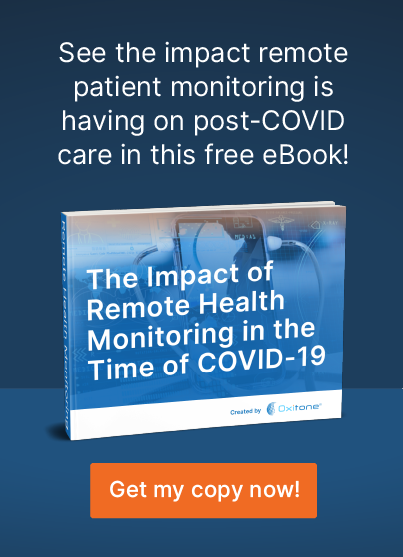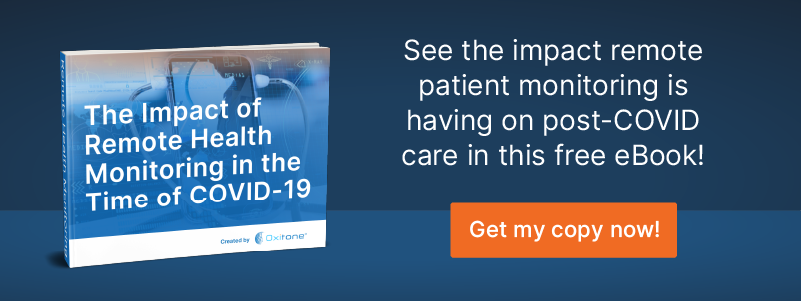Over the last several years, remote patient monitoring (RPM) has proven to be an increasingly effective modality for monitoring chronic and high-risk patients and facilitating the avoidance of unnecessary visits to healthcare facilities. It wasn’t too long ago that both clinicians and patients tended to view RPM with a jaded eye. Part of this was due to the natural skepticism that arises when new technology appears, although there were deficiencies inherent to some RPM solutions. At one point, a New England Journal of Medicine survey reported that RPM was one of the least effective patient engagement initiatives due to lack of accessibility for patients and provider engagement and concerns over the integrity and accuracy of retrieved data, as well as security concerns and the error rates of certain devices and platforms. However, as RPM technology has rapidly improved and its reliability has clearly been demonstrated, many previously held doubts have fallen away. The “trial by fire” represented by the coronavirus pandemic played no small part in this phenomenon. As access to treatment became riskier and more challenging (particularly for immunocompromised and high-risk patients) and facilities became overrun with COVID-19 patients, the need for implementation of RPM on a much wider scale became glaringly apparent. The necessity of caring for recovering post-COVID patients at home, given the shortages in acute care facilities, was a major driver in this case.
But according to Advisory Board, “successful RPM relies on efficient data collection, which is why wearables and other consumer devices will be vital to caring for patients at home in the aftermath of COVID-19.” Like many areas of technology that have been heavily taxed as a result of the pandemic, developing RPM technologies have also been working overtime in the area of continuous improvement of RPM devices and platforms.
Before the Storm
Despite being a relatively novel treatment paradigm prior to the pandemic, RPM technologies have been gaining ground for a while. As devices and platforms were proving themselves, those on the numbers side of healthcare were also having their say. The data didn’t lie, and it was simply a fact that the top 5% of chronic patients accounted for 50% of annual care spending—or about $50,000 per patient, according to the Commonwealth Fund. Often, chronic patients with medical crises drove the lion’s share of these expenditures, many of which could have been headed off with real-time monitoring or addressed before the patient developed life-threatening complications.
One critical issue that arose as RPM grew in healthcare ecosystems was the fact that the available RPM solutions provided incomplete patient data, leading to overburdened decision-making processes. Nearly all RPM solutions provide episodic rather than real-time patient data, allowing for the possibility that medical crises could arise in the periods between patient data being transmitted from devices to the platform (clinicians). What was needed to fill in the gap and accommodate higher-risk and chronic patients was a solution that could monitor a patient’s vital signs 24/7 and transmit the data to the health care provider in real time.
An Unprecedented Emergency
Continuous remote patient monitoring (CRPM) was the logical solution to this problem. Considering the unprecedented pressures that faced healthcare facilities and clinicians during the COVID-19 pandemic and the added risks to patients seeking face-to-face care, the transformation from episodic, manual, and fragmented care to continuous, automated, and prolonged monitoring was now an imperative. The advantages of the predictive power of CRPM’s artificial intelligence combined with wearable medical technology became clear.
The power of CRPM lies in its ability to deliver detailed, accurate patient data in real time. RPM provided significant benefits, but in reporting episodic patient data rather than real-time data, it was of limited value when dealing with high-risk and chronic patients.
With CRPM and its new generation of wearable medical devices, software employs predictive algorithms that detect even minor deviations from the established patient baseline. These medical intelligence algorithms immediately recognize even minute changes in that baseline and react accordingly. This has given CRPM a distinct advantage over current RPM technologies for chronic patients and COVID-19 patients with comorbidities requiring more comprehensive care.
A Proven Treatment Paradigm under Fire
In the fifteen months encompassing the worst of the COVID-19 pandemic, quite a bit of literature and news reports covered the advantages that RPM provided for chronic patients and post-COVID patients with comorbidities to recover at home.
While there is a still-developing “new normal” for healthcare facilities, clinicians, and patients, it is now apparent that continuous monitoring will have a major role to play in the post-COVID care environment. In a hospital ICU, high-risk, chronic, post-COVID patients are continuously monitored. With remote continuous monitoring, these patients can benefit from the same technologies and provider access as ICU patients.
A Superior Model for Future Challenges, Including Post-COVID Care
Although the superiority of continuous monitoring over current RPM technologies is apparent, its advantages are still in the process of being established among clinicians at large. To reiterate, traditional RPM is not real-time patient monitoring because it represents episodic data collection (or episodic data capture). So, an RPM device will transmit data to the remote facility that is collected at specific times, intervals, or when specified events occur. This can be problematic because significant medical events can “slip through the cracks” during intervals in which the patient is effectively not being monitored.
Conversely, the Oxitone platform has the ability to close the care gap left by current RPM. Oxitone is a full-suite, FDA-cleared solution that is true CRPM. In one click, clinicians can access patients’ real-time, intelligent insights and follow up on hundreds of high-risk patients with minimal effort. Oxitone features advanced, integrated SaaS, a physicians’ web portal and dashboards; secured Cloud infrastructure; data analytics tools; reports; API integration tools; and data delivery on demand. Oxitone’s Patient/Caregiver App helps patients stay compliant with their care plan.
For the patient, Oxitone offers the 1000M, the world’s first FDA-cleared wrist-sensor pulse oximetry monitor. This wearable medical device is easy to use, supports Bluetooth, has a long-life rechargeable battery, and is CE Mark certified. The 1000M’s vital parameters monitor provides data on the patient’s skin temperature, pulse rate and HRV, blood oxygen (SpO₂), motion and activity, sleep patterns, and more.
The Oxitone platform is a powerful solution that fully addresses the needs of patients with chronic conditions, and its real-time delivery of data makes it a superior patient solution to RPm. Oxitone’s combination of AI’s predictive power with the convenience of wearable medical technology surpasses the performance of current RPM, so it is the logical choice for higher-risk patients in the post-COVID care environment.
Here at Oxitone, we boost value-based healthcare by delivering extraordinary patient, clinical, and economical outcomes at reduced medical utilization and cost. Patients need a prompt response to emergencies. Physicians need an easy and timely follow-up with patients. Our mission is to transform chronic disease management and help save lives worldwide.
Let’s save lives together! To see how we help remote patient monitoring companies and physicians improve the management and care of high-risk patients, contact us today!


